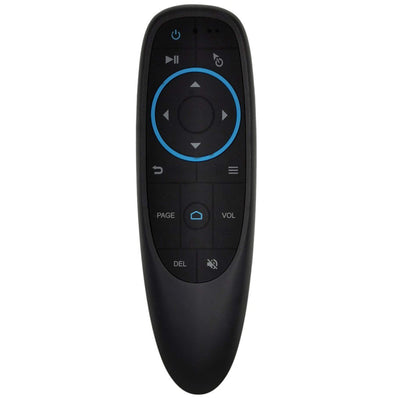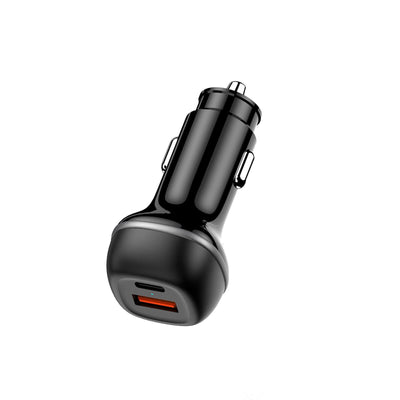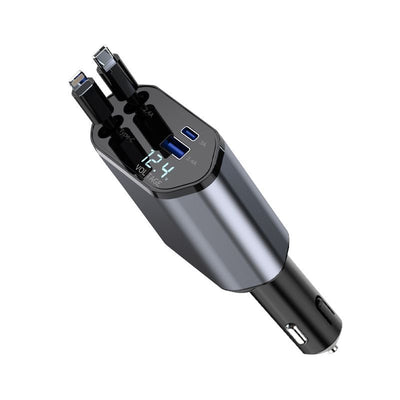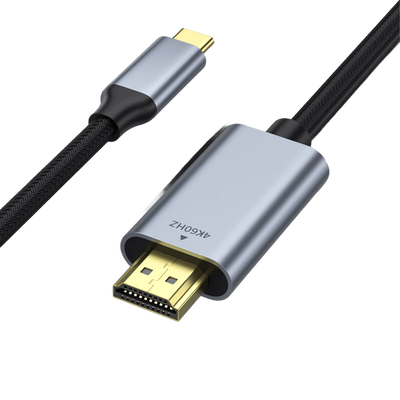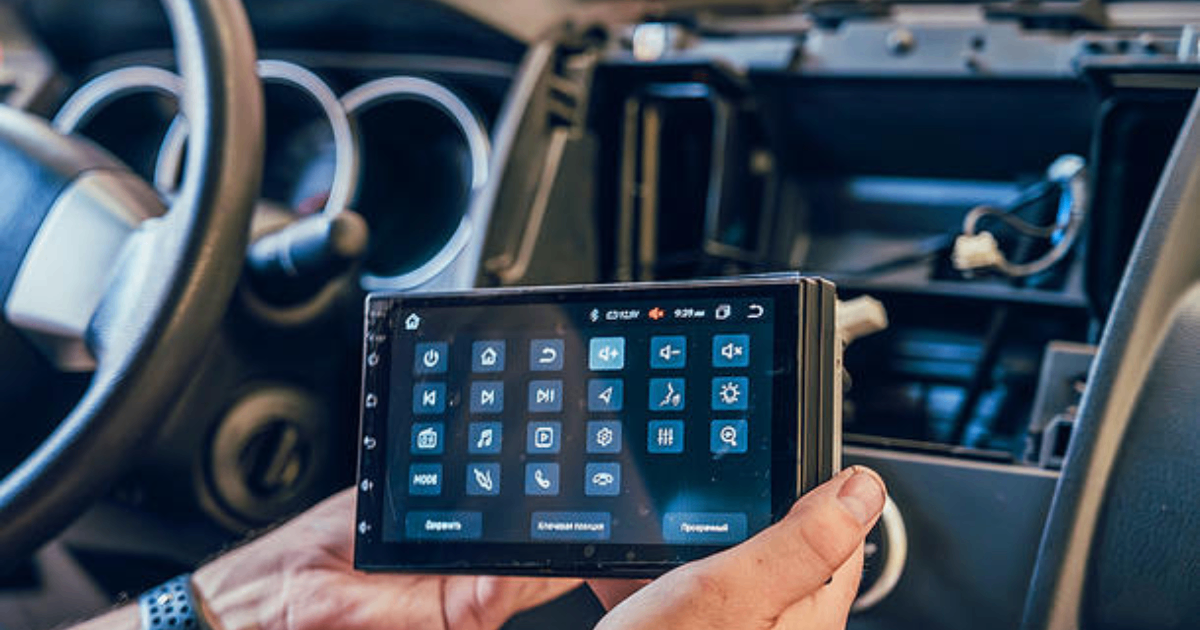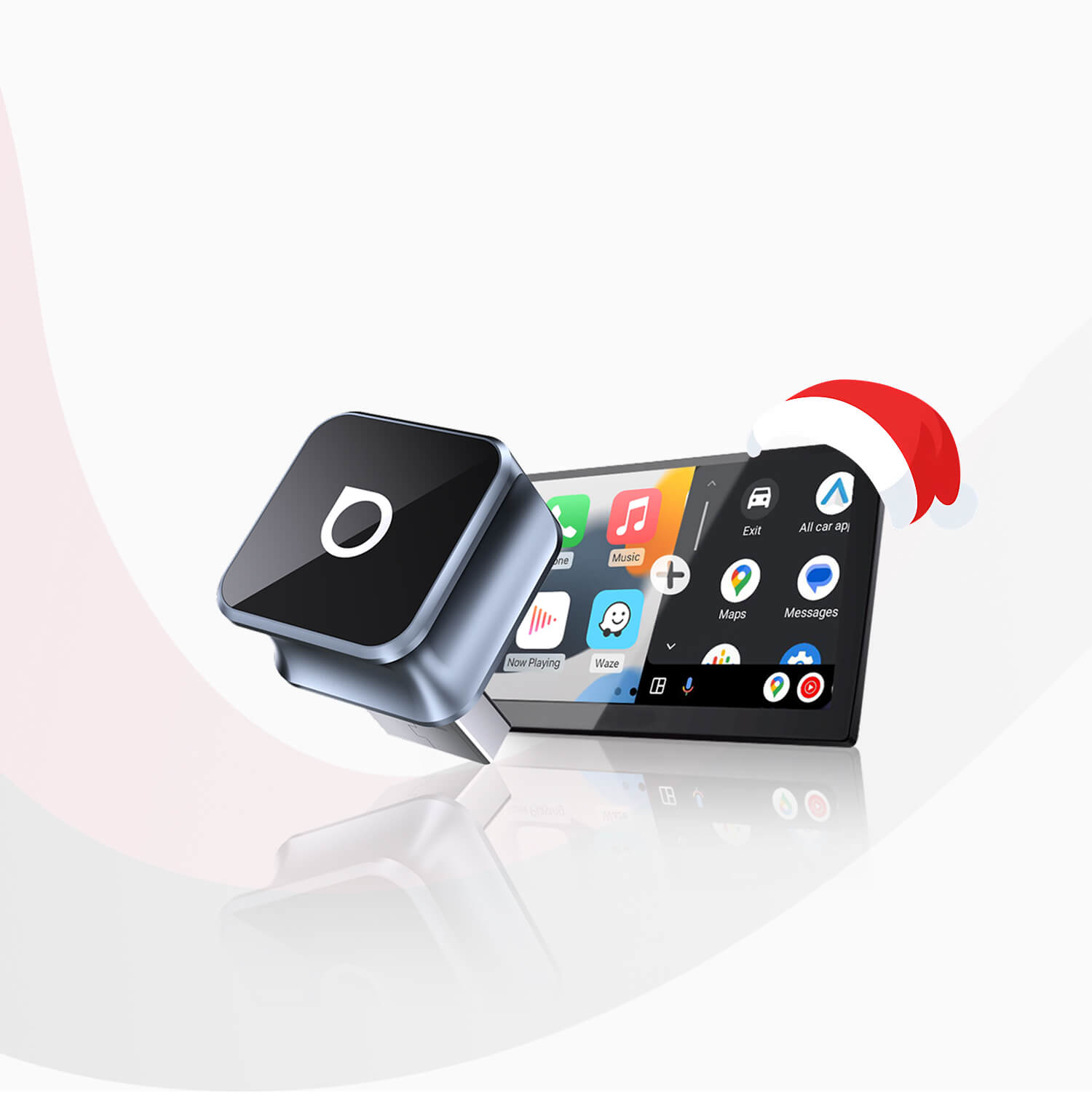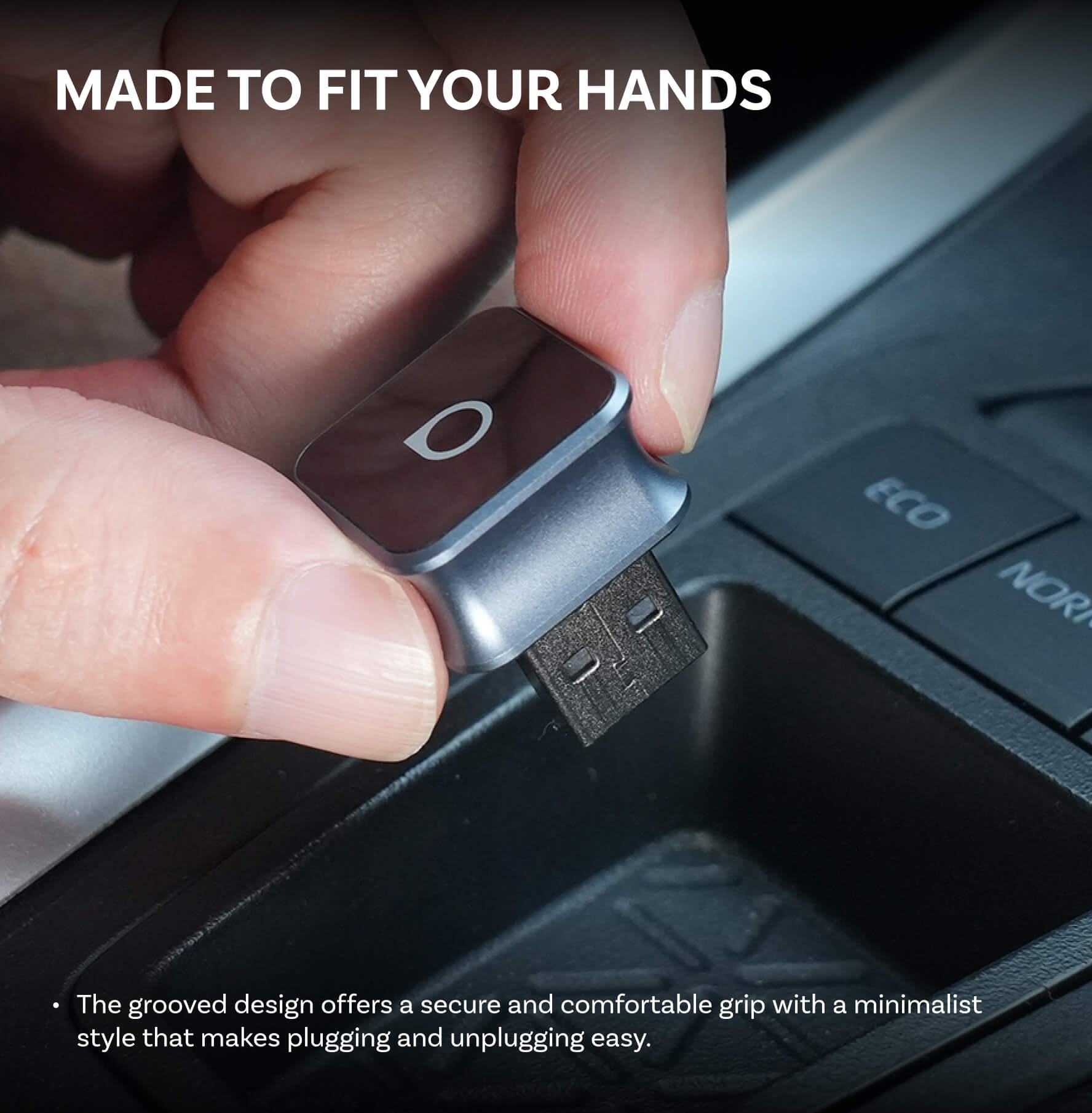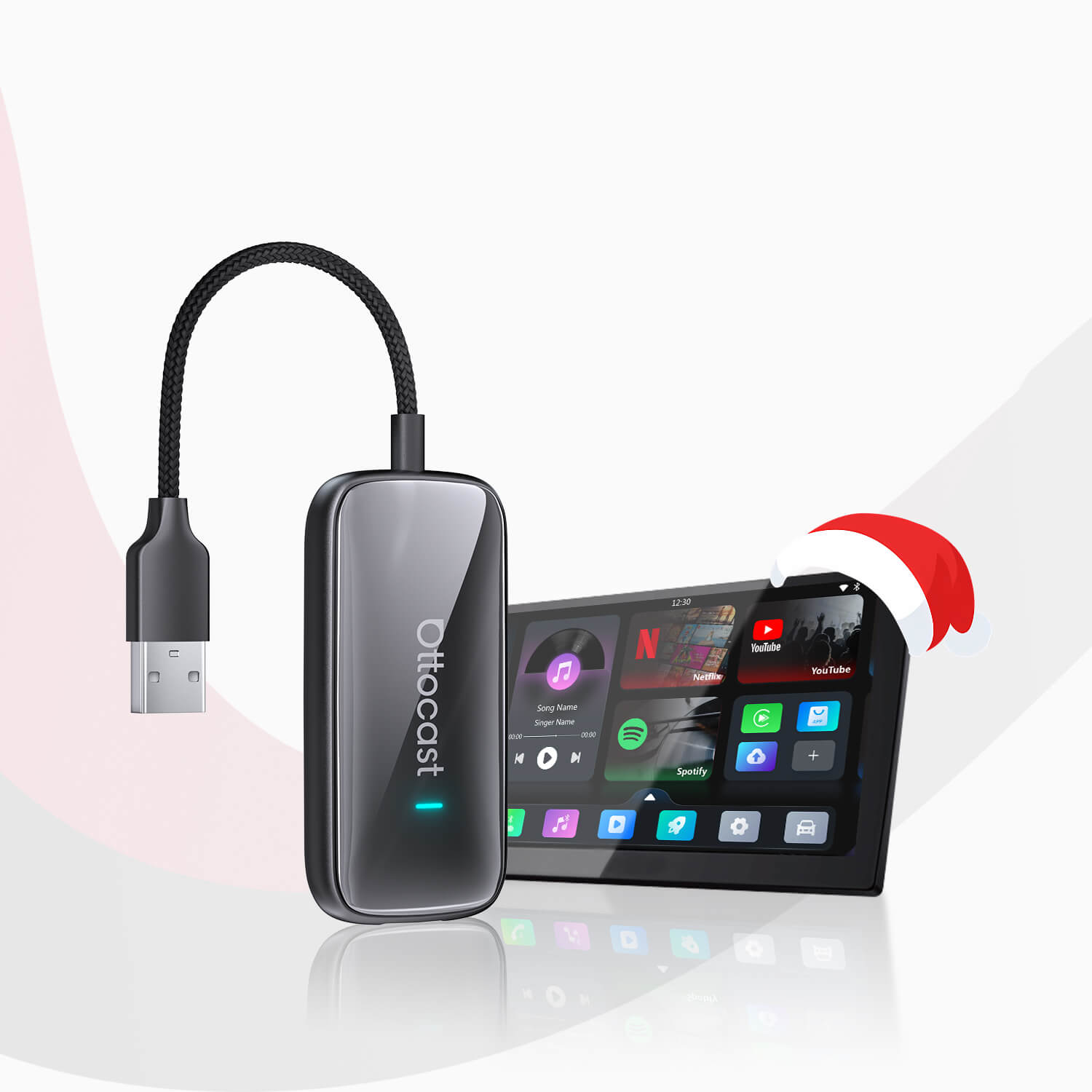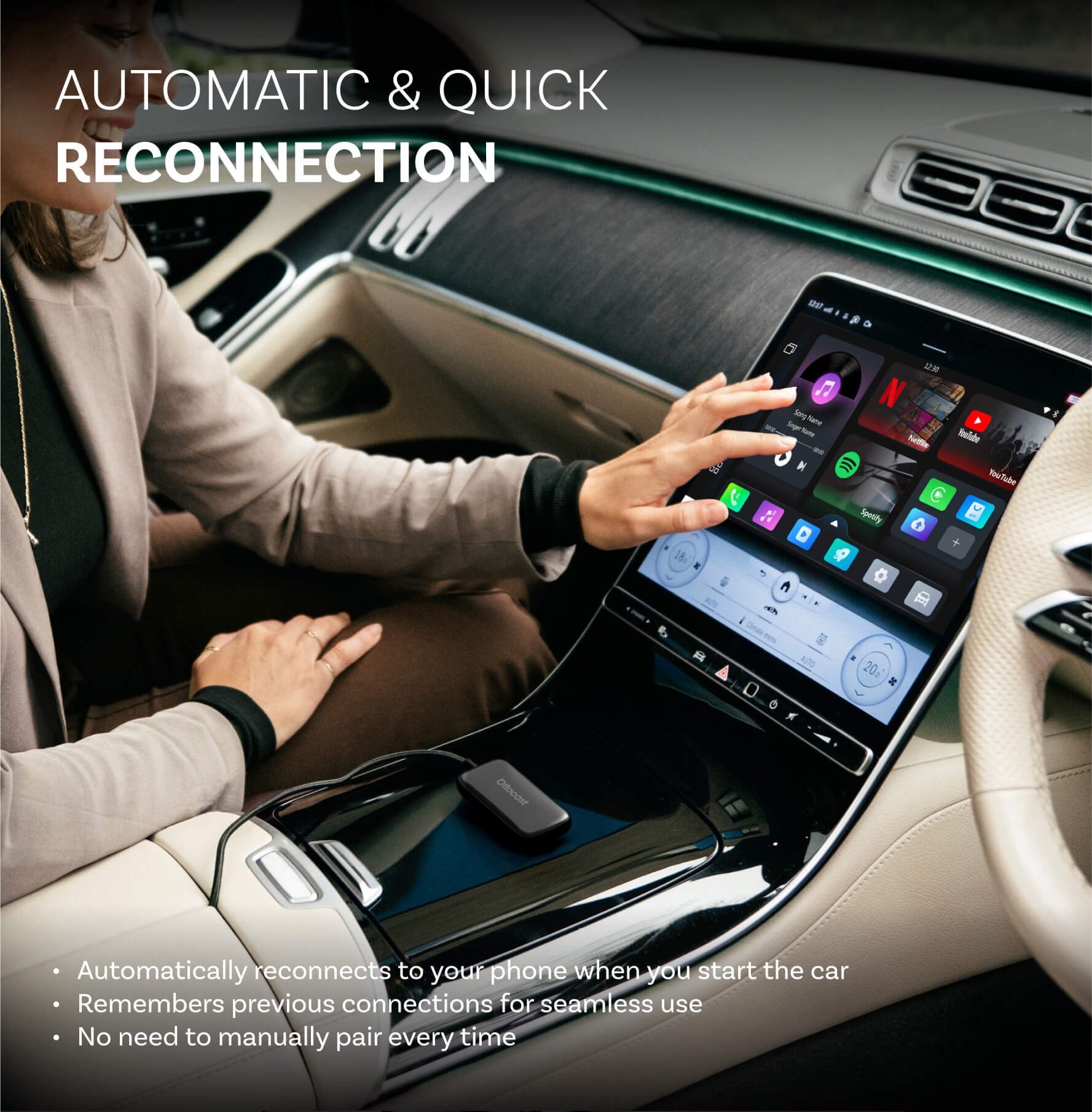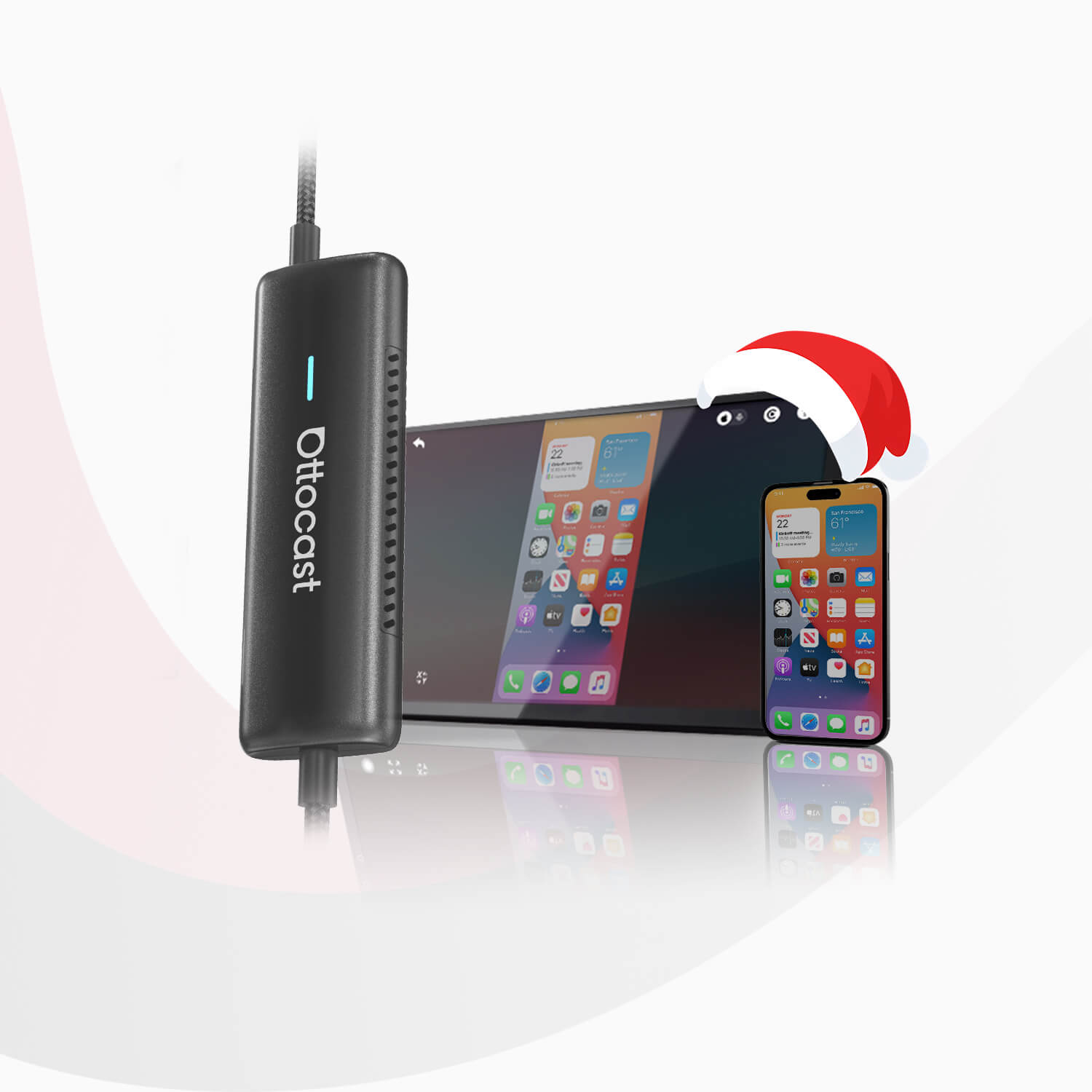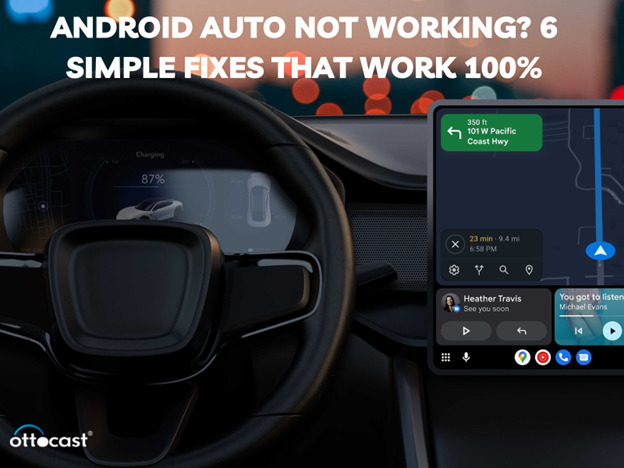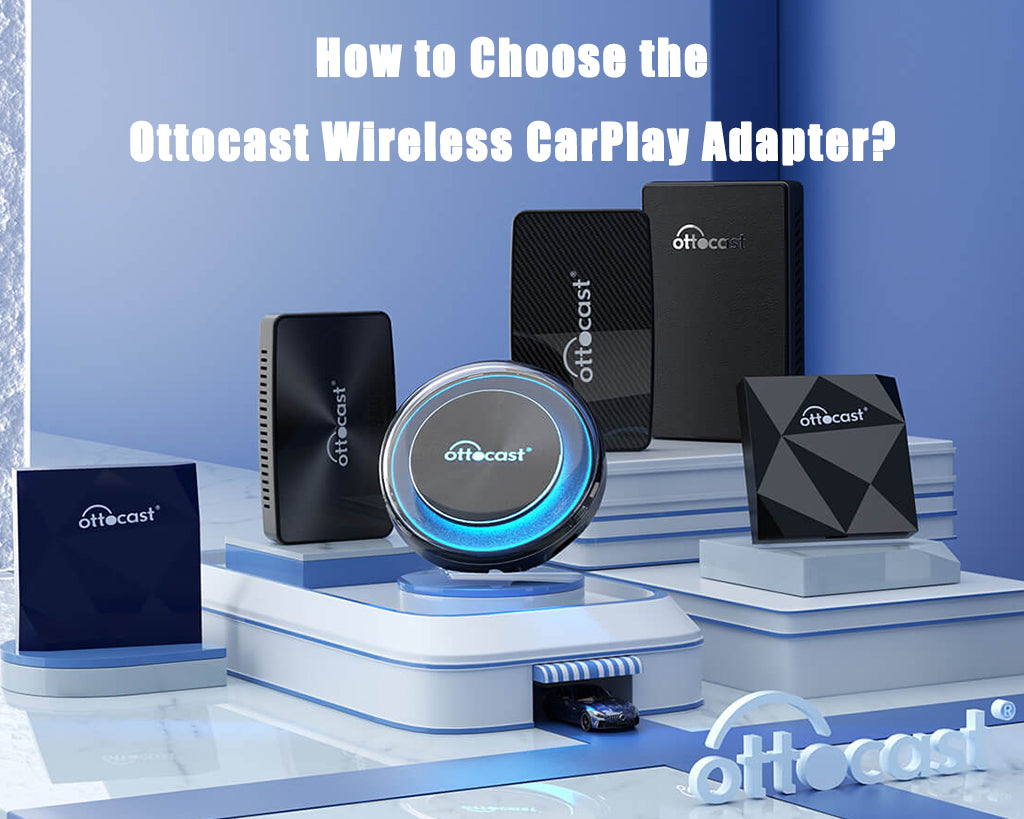
"Android Auto Without Cable - एक वायरलेस ड्राइविंग अनुभव" के साथ इन-कार कनेक्टिविटी के भविष्य की यात्रा शुरू करें। Ottocast, जिसे सर्वश्रेष्ठ ब्रांड के रूप में माना जाता है, 2024 में इस वायरलेस क्षेत्र में क्रांति लाएगा। केबल-रहित Android Auto अनुभव की स्वतंत्रता और सुविधा का अन्वेषण करें क्योंकि Ottocast बेजोड़ कनेक्टिविटी प्रदान करता है।
जानिए कैसे Ottocast आपके ड्राइविंग अनुभव को बदलता है, नेविगेशन, मीडिया और अधिक तक सहज पहुंच प्रदान करता है, और एक सच्चे इमर्सिव और उन्नत इन-कार इंटरफ़ेस के लिए मानक स्थापित करता है। केबल्स को अलविदा कहें और Ottocast को नमस्ते कहें – वायरलेस Android Auto नवाचार में सर्वश्रेष्ठ का प्रतीक।
क्या Android Auto USB के बिना इस्तेमाल किया जा सकता है

Android Auto आपको अपने फोन के ऐप्स और सेवाओं को अपनी कार के इंफोटेनमेंट सिस्टम पर एक्सेस करने की अनुमति देता है। पारंपरिक रूप से, Android Auto के लिए आपके फोन को कार के USB पोर्ट से कनेक्ट करना आवश्यक था।
हालाँकि, वायरलेस Android Auto अब उपलब्ध है, जो आपको अपने फोन और कार को वायरलेस तरीके से कनेक्ट करने की अनुमति देता है। यह केबल-रहित अनुभव प्रदान करता है, जिससे आप ड्राइविंग के दौरान नक्शे, संगीत, कॉल और मैसेजिंग तक पहुंच बनाए रखते हुए अपना फोन अपनी जेब या बैग में रख सकते हैं।
वायरलेस Android Auto का उद्देश्य बिना किसी केबल के उसी कार्यक्षमता और अनुभव को प्रदान करना है जो वायर्ड कनेक्शन देता है। इस गाइड में, हम वायरलेस रूप से अपने Android फोन और संगत कार को कनेक्ट करने के लिए आवश्यकताओं से लेकर समस्या निवारण सुझावों तक सब कुछ कवर करेंगे। केबल-रहित Android Auto अनुभव का आनंद लेने के लिए पढ़ते रहें।
वायरलेस Android Auto का उपयोग क्यों करें?

केबल छोड़कर और Android Auto के साथ वायरलेस जाने से ड्राइविंग के दौरान कुछ अच्छी सुविधाएं और जीवन की गुणवत्ता में सुधार होता है। यहां वायरलेस Android Auto के उपयोग के कुछ लाभ हैं:
- हर बार कार में चढ़ते और उतरते समय अपने फोन को केबल प्लग इन और प्लग आउट करने की झंझट खत्म। वायरलेस AA आपको कार में बैठने, ड्राइविंग शुरू करने और बिना किसी तार के अपने फोन को स्वचालित रूप से कनेक्ट करने की अनुमति देता है।
- गतिविधि की स्वतंत्रता और साफ-सुथरा इंटीरियर। आपके फोन को इन्फोटेनमेंट सिस्टम से जोड़ने वाले कोई तार न होने के कारण, आप अपने फोन को जहां सबसे सुविधाजनक हो वहां रख सकते हैं। इससे इंटीरियर और सेंटर कंसोल क्षेत्र को अव्यवस्था और केबल्स से मुक्त रखने में मदद मिलती है।
- यात्री उपयोग। वायरलेस कनेक्टिविटी यात्रियों के लिए Android Auto को नेविगेशन, संगीत प्लेबैक, या मैसेजिंग के लिए कनेक्ट और उपयोग करना आसान बनाती है जबकि ड्राइवर सड़क पर ध्यान केंद्रित करता है। यात्रियों को उपयोग बदलने के लिए केबल प्लग इन और प्लग आउट नहीं करना पड़ता।
- USB-C/लाइटनिंग पोर्ट पर कम घिसाव। बार-बार केबल प्लग इन/प्लग आउट करने से फोन के चार्जिंग पोर्ट का तेजी से खराब होना होता है। वायरलेस AA इस अनावश्यक घिसाव को रोकता है।
- तेज़ सेटअप और निकास। केबल छोड़ने का मतलब है वाहन में प्रवेश करते समय तेज़ और सरल सेटअप और गंतव्य पर पहुंचने पर कुछ भी डिस्कनेक्ट किए बिना आसान निकास। कुल मिलाकर, यह अधिक सुविधाजनक है।
वायरलेस जाना केबल्स से निपटने की झंझट को समाप्त करता है, जिससे Android Auto का एक सुव्यवस्थित और बिना अव्यवस्था वाला अनुभव मिलता है। जब तक आपके डिवाइस संगत हैं, यह आपकी कार में AA के लाभों का आनंद लेने का एक उत्कृष्ट तरीका है।
वायरलेस Android Auto के लिए आवश्यकताएँ
बिना केबल के Android Auto को कैसे कनेक्ट करें, यह जानने के लिए, यह सुनिश्चित करना कि आपका डिवाइस और वाहन इन आवश्यकताओं को पूरा करते हैं, बेहतर ड्राइविंग अनुभव की ओर पहला महत्वपूर्ण कदम है।
वायरलेस Android Auto का उपयोग करने के लिए, आपके पास होना चाहिए:
एक संगत Android फोन
वायरलेस Android Auto वर्तमान में केवल Android 11 या उससे ऊपर पर समर्थित है। जांचें कि क्या आपके डिवाइस में सेटिंग्स > डिवाइस के बारे में अनुभाग में Android 11 है। आपके Android फोन को वायरलेस कनेक्टिविटी के लिए 5GHz WiFi का समर्थन करना चाहिए। पिछले कुछ वर्षों में जारी अधिकांश नए Android डिवाइस इसे समर्थन करते हैं।
एक संगत कार या आफ्टरमार्केट हेड यूनिट
आपकी कार में हेड यूनिट को विशेष रूप से वायरलेस Android Auto का समर्थन करना चाहिए। यह अभी भी एक अपेक्षाकृत नई सुविधा है जो केवल नए वाहन मॉडलों और आफ्टरमार्केट हेड यूनिट्स में उपलब्ध है।
मुख्य कार निर्माता जैसे Ford, BMW, GM, Honda, Hyundai, और अन्य ने हाल के मॉडलों में वायरलेस समर्थन की घोषणा की है। पुष्टि के लिए अपने वाहन के मैनुअल या स्पेसिफिकेशन देखें।
आफ्टरमार्केट हेड यूनिट्स के लिए, उन मॉडलों को देखें जो विशेष रूप से वायरलेस Android Auto समर्थन का विज्ञापन करते हैं। लोकप्रिय ब्रांडों में Kenwood, Pioneer, JVC, Sony, Alpine आदि शामिल हैं।
फोन और कार के इंफोटेनमेंट सिस्टम दोनों में वायरलेस Android Auto होना चाहिए ताकि इसे केबल-रहित उपयोग किया जा सके। यदि किसी भी डिवाइस में समर्थन नहीं है, तो आपको पहले की तरह USB केबल का उपयोग करना होगा। लेकिन वायरलेस स्वतंत्रता के लिए अपने फोन या कार स्टीरियो को अपग्रेड करना लाभकारी है!
कैसे बिना USB केबल के Android Auto कनेक्ट करें

प्रौद्योगिकी में प्रगति के साथ, वायरलेस कनेक्टिविटी की शक्ति का उपयोग करें और निम्नलिखित चरणों का पालन करें ताकि आपकैसे बिना केबल के Android Auto का उपयोग करें में महारत हासिल कर सकें, जिससे आपकी दैनिक यात्रा अधिक कुशल और आनंददायक हो।
चरण 1: सेटिंग्स में वायरलेस Android Auto सक्षम करें
अपने Android फोन पर, सेटिंग्स ऐप खोलें और Connected Devices > Connection Preferences > Wireless Android Auto पर जाएं। वायरलेस Android Auto सक्षम करने के लिए टॉगल चालू करें। इससे आपका फोन संगत कार हेड यूनिट्स की खोज और कनेक्ट कर सकेगा।
कुछ Android मॉडल में नेटवर्क और इंटरनेट या कनेक्शंस के अंतर्गत वायरलेस Android Auto सेटिंग भी होती है जिसे चालू करना होता है। इसे सक्षम करने के लिए अपने फोन की सेटिंग्स जांचें।
चरण 2: फोन को हेड यूनिट से पेयर करें
अपने फोन पर वायरलेस Android Auto सक्षम होने के साथ, अपनी कार में जाएं और इंफोटेनमेंट स्क्रीन पर Android Auto विकल्प चुनें। यह आपके फोन की खोज शुरू कर देगा।
आपको अपने फोन पर एक सूचना मिलनी चाहिए कि हेड यूनिट कनेक्ट होने का अनुरोध कर रहा है। इस कनेक्शन को स्वीकार करें।
हेड यूनिट एक पेयरिंग कोड दिखाएगा। पुष्टि करें कि आपके फोन पर कोड हेड यूनिट डिस्प्ले पर दिखाए गए कोड से मेल खाता है। अपने फोन पर पेयरिंग कनेक्शन स्वीकार करें।
कुछ ही क्षणों में, Android Auto आपके कार के डिस्प्ले पर लॉन्च हो जाएगा, जो अब आपके फोन से वायरलेस तरीके से कनेक्ट है। आप इसके नेविगेशन, मीडिया, कॉलिंग, और वॉइस असिस्टेंट फीचर्स का बिना किसी केबल के सहजता से उपयोग कर सकते हैं।
कुछ कारें पेयरिंग कनेक्शन को याद रख सकती हैं और हर बार जब आप वाहन में प्रवेश करते हैं तो स्वचालित रूप से कनेक्ट हो जाती हैं। अन्य के लिए, आपको मैन्युअल रूप से Android Auto कनेक्ट करना पड़ सकता है। चूंकि आपके फोन पर वायरलेस Android Auto सक्षम है, कनेक्शन प्रक्रिया में केवल कुछ सेकंड लगते हैं।
मैं वायरलेस तरीके से Android Auto क्यों नहीं कनेक्ट कर पाता?

कुछ सामान्य कारण हैं जिनकी वजह से आप USB के बिना Android auto-connect से कनेक्ट नहीं कर पाते:
- आपका फोन संगत नहीं है- केवल कुछ Android फोन ही वायरलेस Android Auto कनेक्टिविटी का समर्थन करते हैं। जांचें कि आपका डिवाइस समर्थित है या नहीं।
- आपकी कार संगत नहीं है- आपके वाहन के हेड यूनिट को वायरलेस Android Auto का भी समर्थन करना चाहिए। सुनिश्चित करें कि आपके कार मॉडल और वर्ष में वायरलेस Android Auto की क्षमता है।
- ब्लूटूथ बंद है- वायरलेस Android Auto के काम करने के लिए ब्लूटूथ चालू और आपके फोन और कार के बीच पेयर होना आवश्यक है। सुनिश्चित करें कि दोनों डिवाइसों पर ब्लूटूथ सक्षम है।
- खराब फोन रिसेप्शन- कमजोर सेल सिग्नल वायरलेस कनेक्शन को बाधित कर सकता है। अपने फोन को हेड यूनिट के करीब या बेहतर रिसेप्शन वाले स्थान पर ले जाएं।
- पुराना सॉफ़्टवेयर- सुनिश्चित करें कि आपके फोन और कार में नवीनतम सॉफ़्टवेयर अपडेट इंस्टॉल हों। पुराने संस्करणों में वायरलेस कनेक्टिविटी बग हो सकते हैं।
- अन्य डिवाइसों से हस्तक्षेप- आपकी कार के ब्लूटूथ या WiFi से जुड़े अन्य फोन या डिवाइस हस्तक्षेप कर सकते हैं। परीक्षण के लिए अन्य डिवाइसों को डिस्कनेक्ट करने का प्रयास करें।
- सीमा से बाहर- वायरलेस AA कनेक्ट करने के लिए आपका फोन कार के पास होना चाहिए। यदि आप दूर से कनेक्ट कर रहे हैं तो अपने फोन को करीब लाएं।
- कैश या ऐप डेटा समस्याएँ- कभी-कभी, Android Auto के लिए कैश और ऐप डेटा साफ़ करने से लगातार वायरलेस समस्याओं को हल करने में मदद मिल सकती है। इससे Android Auto डिफ़ॉल्ट सेटिंग्स पर रीसेट हो जाएगा।
यदि आप अभी भी स्थिर वायरलेस कनेक्शन प्राप्त नहीं कर पा रहे हैं, तो समस्याओं के समाधान तक विश्वसनीय Android Auto अनुभव के लिए वायर्ड USB विधि का उपयोग करें। अपने मॉडल के लिए समस्या निवारण सुझावों के लिए हेड यूनिट और फोन निर्माताओं से जांच करें।
निष्कर्ष
सारांश में, केबल के बिना Android Auto का अनुभव एक सहज और सुविधाजनक ड्राइविंग अनुभव प्रदान करता है। उल्लिखित चरणों का पालन करने और आवश्यकताओं को पूरा करने से अधिकांश Android उपयोगकर्ता केबल-मुक्त कनेक्शन का आनंद ले सकते हैं। कभी-कभी समस्याएँ होने के बावजूद, नेटवर्क रीसेट या अपग्रेड जैसी समाधान मौजूद हैं। जैसे-जैसे वायरलेस Android Auto विकसित होता है, यह एक हैंड्स-फ्री और एकीकृत इन-कार अनुभव का वादा करता है, जो नेविगेशन, मीडिया, और अधिक तक आसान पहुंच पर जोर देता है—जो वास्तव में "केबल के बिना Android Auto" का सार है।
अक्सर पूछे जाने वाले प्रश्न
क्या मुझे Android Auto के लिए विशेष USB केबल की आवश्यकता है?
नहीं, एक मानक USB केबल काम करता है, लेकिन एक उच्च गुणवत्ता वाला केबल प्रदर्शन और चार्जिंग गति को बढ़ा सकता है ताकि Android Auto का अनुभव सहज हो।
क्या CarPlay Android Auto से बेहतर है?
पसंद अलग-अलग होती है, लेकिन CarPlay और Android Auto दोनों समान सुविधाएँ प्रदान करते हैं। चुनाव आपके डिवाइस की पसंद और कार की संगतता पर निर्भर करता है।
क्या मैं Android Auto को ब्लूटूथ के माध्यम से कनेक्ट कर सकता हूँ?
जबकि Android Auto मुख्य रूप से USB कनेक्शन पर निर्भर करता है, कुछ कारें और डिवाइस ब्लूटूथ के माध्यम से वायरलेस कनेक्टिविटी का समर्थन करते हैं, जो केबल-मुक्त सुविधा प्रदान करता है।
Android Auto के साथ कौन सा फोन सबसे अच्छा काम करता है?
Samsung, Google, और OnePlus जैसे ब्रांडों के उच्च-स्तरीय Android डिवाइस Android Auto के साथ बेहतर प्रदर्शन के लिए जाने जाते हैं, जो एक सहज उपयोगकर्ता अनुभव सुनिश्चित करते हैं।
कौन सी कारें Android Auto के अनुकूल हैं?
होंडा, फोर्ड, और वोक्सवैगन सहित अधिकांश प्रमुख कार निर्माता, बिल्ट-इन Android Auto संगतता वाले मॉडल प्रदान करते हैं। एकीकरण विवरण के लिए विशिष्ट कार मॉडलों की जांच करें।















